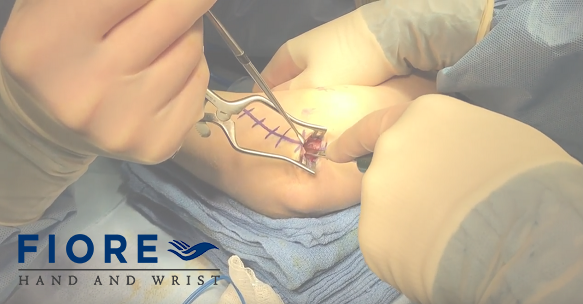
Cubital Tunnel Diagnosis And Treatment
DIAGNOSIS:
Cubital Tunnel Syndrome is a compression neuropathy caused by the compression of the ulnar nerve at the elbow and causes weakness in the hand, pain, swelling, and numbness in the ring and pinky fingers. It is common among baseball and softball pitchers, due to repetitive elbow movement, and cyclists who tend to compress their forearms against their handlebars while riding. In addition, Cubital Tunnel Syndrome is common among those in a profession that requires them to keep their elbows bent or with pressure applied for a prolonged period of time.
The ulnar nerve is affected when one hits their funny bone. This nerve passes through a tunnel of bone, ligament and muscle at the elbow called the Cubital Tunnel. When this nerve becomes compressed or pinched within this tunnel, sensation, movement, and strength in the hand can be affected.
A physician diagnoses Cubital Tunnel Syndrome through a physical exam. In some cases, a nerve test is performed.
NON-OPERATIVE TREATMENT:
- Reducing activity that aggravates the nerve, such as bending or leaning on the elbow.
- Elbow pads protecting the nerve from hard surfaces.
- Splinting of the elbow.
- Anti-inflammatory medication.
OPERATIVE TREATMENT:
Decompression of the ulnar nerve
Minimally invasive in-situ decompression 2-3 cm incision consists of decompressing the nerve from the elbow to 5 cm distal past the elbow. Its primary weakness is that sometimes the nerve may be pinched proximal before the elbow. Many cases can be handled in this matter.
Transposition consists of freeing up the nerve and moving it in front of the elbow while decompressing both proximal and distal to the elbow. In the past, a majority of ulnar nerve decompression’s involved some type of transposition, whether it be under the skin and fat, subcutaneous, or underneath the muscle, sub-muscular. Research does not show any benefit for routinely doing these procedures as opposed to the in situ decompression.
Endoscopic Cubital Tunnel Decompression
This procedure consists of a 2 cm incision, inserting a camera and decompressing the nerve endoscopically, before and after the elbow. Incisions are typically smaller and the recovery quicker than the traditional techniques.
Over the past several years, more than 1000 Endoscopic Cubital Tunnel Release surgeries have been performed by Dr. Fiore. He reserves transpositions for patients who have jumping of the nerve, otherwise known as subluxation.
The surgeon performs a 2-3cm incision as opposed to the much longer historical incision indicated by the purple marker. He elevates the tissue above the nerve to create space. Insertion of dilators over the nerve increase the space so, that the scope and the nerve decompression device can be placed.
This is the view from the scope and the decompression device. At approximately 6 o’clock is a thick white/grey cord like structure, the ulnar nerve. The nerve is visualized from the time you place the scope until it is removed, thus minimizing any chance the nerve could be cut. Once it is clear that the nerve is out of the path, the fibrous attachments which are pinching it are then released. This occurs both before and after the elbow.
Dr. Fiore specializes in the diagnosis and treatment of Cubital Tunnel Syndrome. He is board certified by the American Board of Surgery and fellowship trained in hand surgery. For more information on treatment options, or to schedule a consultation, call Fiore Hand and Wrist at (281) 970-8002.
We are conveniently located within driving distance of Cypress TX, Katy TX, Spring TX, Tomball TX, The Woodlands TX, and Houston TX.
For more information please visit Handcare.org.

